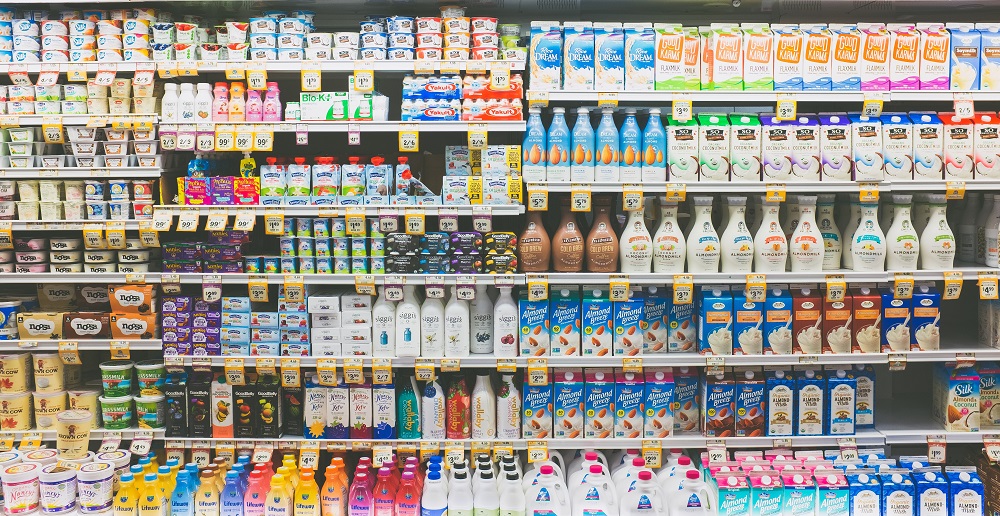The less discussed threats of challenger categories and increased private label activity represent long-term obstacles for legacy brands.
New categories previously overlooked can quickly become hubs of innovation, drawing consumers away from less nimble competitors. Meanwhile, from the other side of the innovation spectrum, premium private label can deliver high quality products without the price to match.
Between the rise of challenger categories and private label pursuers, how can we continue to unlock growth potential in the complicated and fast-changing food business? Here, we break down three different types of emerging threats by connecting them to underlying and underserved consumer needs created by shifting definitions of value.
First, what is a category challenge?
A category challenge can represent an inflection point in a life cycle of a category. It is a threat that can either spur the category on to greater innovation or lead to its decline.
We have localized these category challenges into three distinct groups.
-
Threat of upstart brands. An upstart brand is a brand that comes into a category and rapidly gains market share because it has a new conception of how that category could be considered. It taps into latent desires that consumers might have for that category. This can act as a catalyst for quick change in the very definition of the category.
Upstart brands certainly garner a lot of attention in the press because of the disruption they cause, but moving beyond the threat of upstart brands are two longer-term threats to the category status quo.
-
Threat of challenger categories. A challenger category is one that is sufficiently similar to an incumbent category that consumers could replace it with the challenger category. They might do so if the challenger category offers additional benefits that the incumbent category does not possess.
-
Threat of private label pursuers. A private label pursuer is the ability of private label, especially following more premium private label strategies, to act as fast followers or even leaders in some categories and thus force brands to innovate more rapidly to stay ahead of where private label is.
Let’s focus on the two longer-term threats that might go under-considered when we’re thinking strategically.
Since challenger categories and private label pursuers are longer-term threats and because their impact takes a longer time to play out on the category, to understand how they might work, we need to look a little more historically than traditionally we might otherwise do.
Let’s think about a category that is not discussed all that much these days: margarine. Looking through the lens of time, back to the 1980s and 1990s, imagine how consumers viewed margarine in those decades.
By the time the 1990s rolled along, margarine was still an iconic American category. Articles, advertisements and cartoons from the period speak to how consumers were having to make the choice between butter and margarine, and which would best satisfy their needs.
At the time, butter and margarine were viewed as essentially sensory equivalent. Margarine was not perceived as inferior to butter but was just a cheaper substitute. In many cases, margarine at that time was perceived as healthier.
Today, we certainly don’t share these views, so something must have changed in the culture.
Despite being a key element of American diets for more than 30 years, peaking at more than three times as much consumption as butter, margarine had a fairly prodigious decline. Three key shifts in food culture brought down margarine as an incumbent category:
- Rise of fat as a demonized macro-ingredient (starting in 1993 and peaking in the early 2000s)
- Awareness of the dangers of trans fats (mid-90s to mid-2000s)
- Rise of desire for minimally processed foods (2008 to today)
All three, acting in concert, led to margarine’s downfall. Although American fat consumption dipped slightly in the height of the low-fat craze, today we are eating as much fat as we ever have. So where did all those margarine eatings go? What are the challenger categories that benefitted?
Margarine lost out primarily to olive oil in particular and vegetable oils more broadly. As margarine declined, other categories captured occasions that previously belonged to margarine, raising the question: why the switch?
While it may seem like too obvious a question to ask, given what we already know, olive oil had a strong suite of benefits that connected to consumer demands — monounsaturated fats, antioxidants plus other more nebulous health benefits, reduced processing. These attributes ladder up to consumers’ desires for heart health, minimal processing and premium flavor experience.
The Takeaway
- The category status quo will change — either in the short term from upstart brands or in the long term from challenger categories and private label pursuers.
- Incumbent categories are woven into consumers’ lives — but challenger categories can replace them if they offer a compelling set of benefits.
- With consumers’ purchase priorities in flux, understanding clearly the reasons they engage in your category is necessary to determining if a challenger category is a real threat or a paper tiger.
Related stories:
- CPG companies capitalize on brand recognition with collaborations
- The changing nature of the frozen food aisle
- What’s trending in snacks?
As CEO of The Hartman Group, Demeritt drives the vision, strategy, operations and results-oriented culture for the company’s associates as The Hartman Group furthers its offerings of tactical thinking, consumer and market intelligence, cultural competency and innovative intellectual capital to a global marketplace.
_____________________________________
If you enjoyed this article, sign up for Consumer Brands SmartBrief or FMI dailyLead to get news like this in your inbox, or check out all of SmartBrief’s food and travel newsletters as we offer more than 30 newsletters covering the food and travel industries from restaurants, food retail and food manufacturing to business travel, the airline and hotel industries and gaming.
